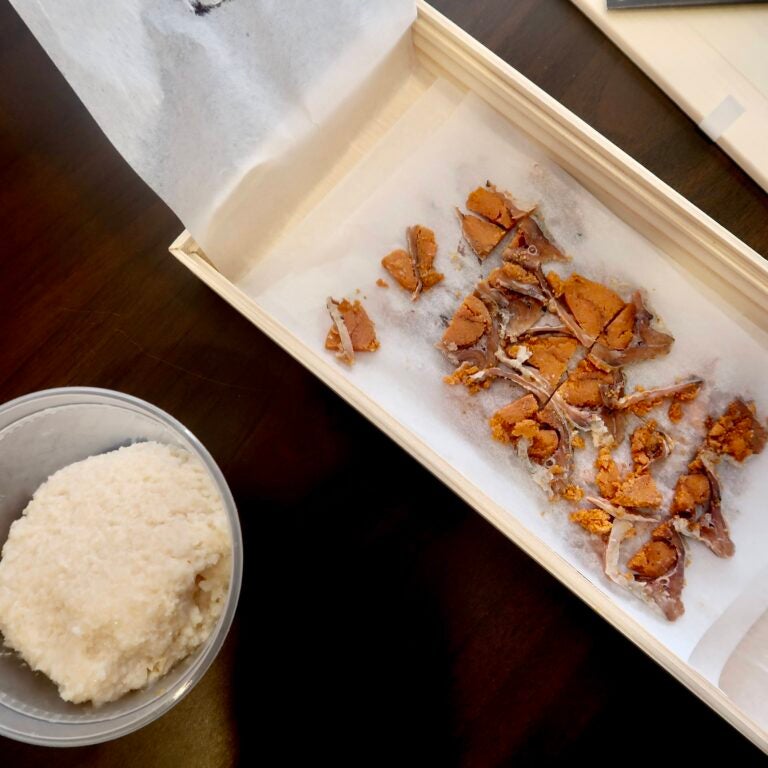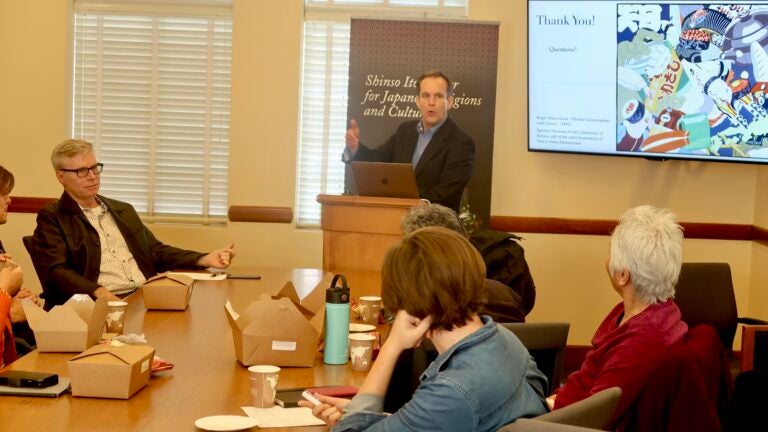Japanese cooking has made an indelible mark on global culinary culture.
This newly-inaugurated speaker series will provide a venue for analyses of Japan’s rich regional and national Japanese food traditions, from the Nara Period to the present. Food Studies is an inherently interdisciplinary undertaking. Our intention is to sponsor events that showcase the work of one or more speakers and bring together researchers in the humanities, organic sciences, agriculturalists, environmentalists, and, of course, chefs. The inaugural lecture, in February of 2023, welcomed renowned Japan food historian Prof. Eric Rath, who presented on fermentation and the premodern origins of sushi, and Michelin star-winning Chef David Schlosser of Shibumi DTLA, who provided audience members with a sampling of narezushi from the famed Uoji Honten in Shiga Prefecture.

Past Events
Wednesday, December 4, 2024
Goyō-yado 御用宿 was an Edo-period system under which select families in the town of Taisha, near the Izumo Grand Shrine, provided lodging and hospitality for visiting officials from the Matsue Domain and the Shogunate. The Tezen family served as Goyō-yado hosts for generations. This talk will explore the historical significance of the Goyō-yado system via several examples of high-ranking officials who were hosted by the Tezen family, detailing the preparations, menus, and events associated with these visits. Among the family records, one of the most notable is the 1789 pilgrimage to Izumo Taisha by Matsudaira Nobuchika (brother of the 7th Lord of Matsue Domain, Matsudaira Harusato). On that occasion the Tezen family hosted Nobuchika and 23 of his retainers. Family records of this case and others illustrate the elaborate care given to such official visits, especially in the preparation of meals.
Respondent:
Anne Walthall, Professor Emerita, UC-Irvine.
Wednesday, April 24, 2024
Abstracts:
Bruce Hamana
Nature (Shizen) is a major inspiration of Japanese art and culture, and in chanoyu it finds concrete form in many aspects, such as the garden, the architecture of the teahouse, the food, flowers, and the assemblage of the utensils. In a visual introduction, nature and the appreciation of the seasons will be discussed in the context of the teagathering, which is the raison d’etre of chanoyu.
Akiko Walley
Deriving from a principle of tea ceremony, ichigo ichie—or “one chance, one encounter”—is now used broadly to mean cherish each moment as one’s last. For each tea gathering, a host selects teabowls and other utensils and alcove decorations to orchestrate a perfect once-in-a-lifetime experience for the guests. This presentation introduces the role of the architecture and art of tea in mediating a memorable encounter between hosts and their guests.
Wednesday, February 15, 2023
Sushi’s appearance in US grocery stores, usually coated in sauces and fried toppings, demonstrates how the once simple dish evolves as it globalizes. But sushi was a much different recipe 1,200 years ago when it was first mentioned in Japanese records. The likely derivation of “sushi” is “something sour” indicating that it was a fermented food, one that took months if not years to prepare.













